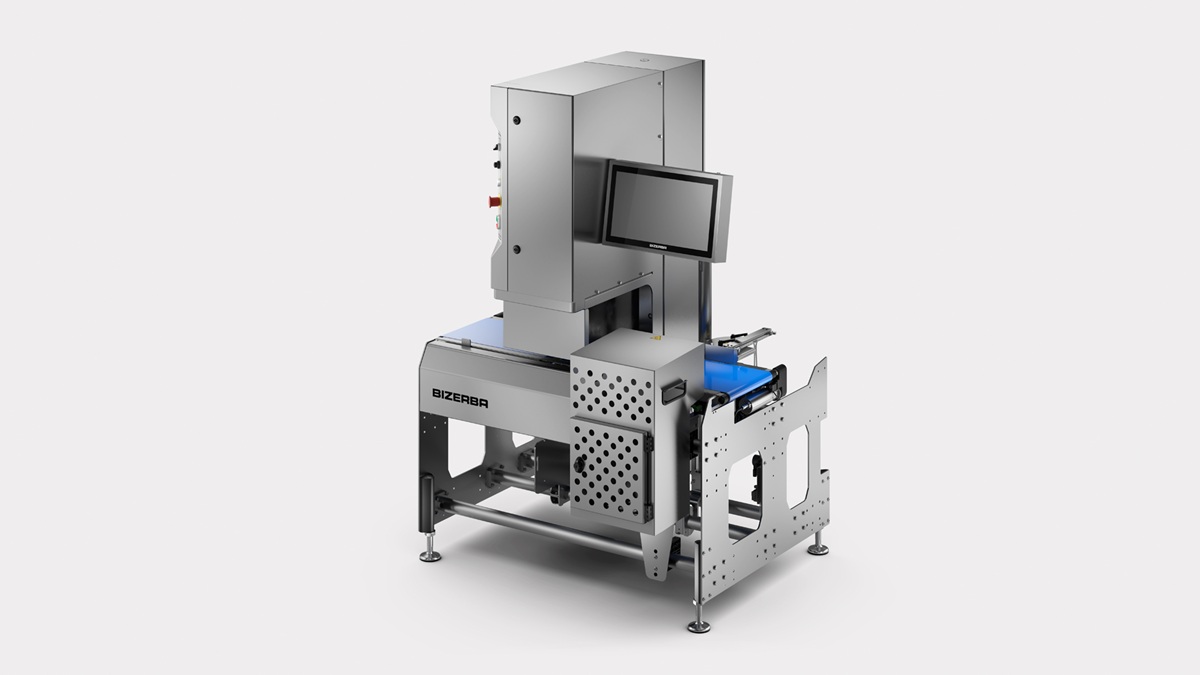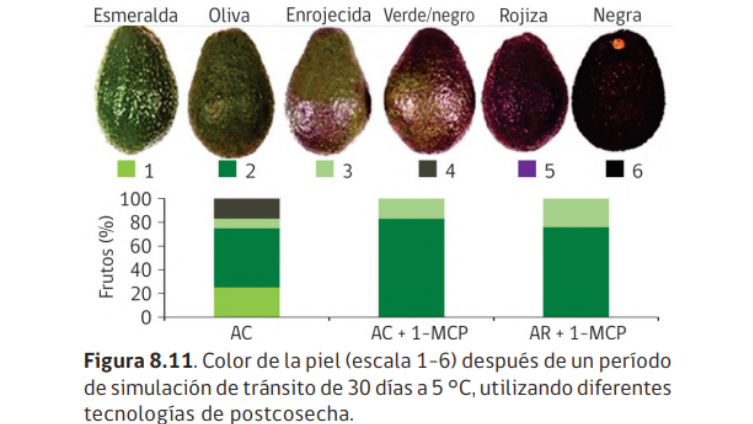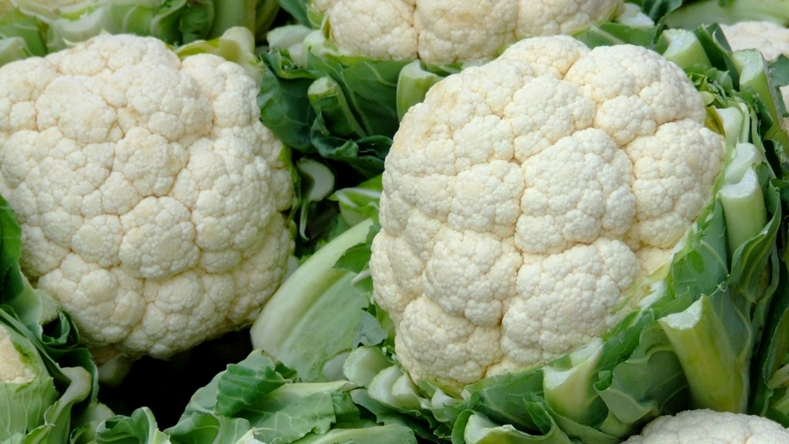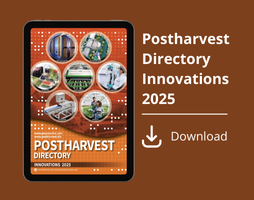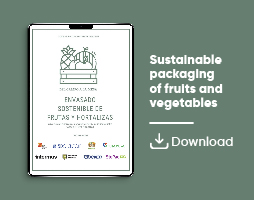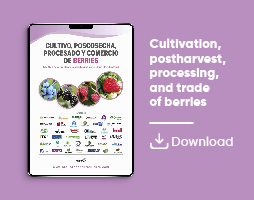News
Review About Recent Advances in Postharvest Physiology and Preservation Technology of Peach Fruit
The review, by Sen Cao et al. considers the physiological characteristics of peach during postharvest, diseases, and chemical and physical tools to keep the quality
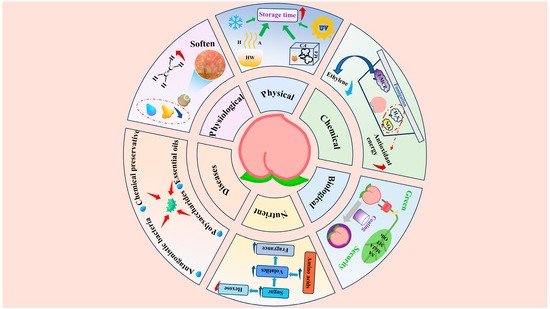
Peaches are highly susceptible to rapid deterioration and bacterial infection during postharvest transportation and storage, leading to significant losses.
In order to maintain peach fruit postharvest quality and extend its shelf life, it is critical to understand the physiological changes in postharvest fruit and implement effective postharvest technologies.
This paper reviews the major postharvest physiological changes in peach fruit, including respiration, ethylene, hormones, texture, sugars, amino acids, phenolics, and volatiles, analyzes the major postharvest peach fruit diseases and their control techniques (covering brown rot, soft rot, and gray mold), and summarizes approaches to extend the storage life of peach fruit and maintain quality through physical, chemical, and biological preservation techniques.
This review evaluates the advantages and disadvantages of postharvest peach fruit preservation techniques by analyzing postharvest physiological and nutritional quality, and suggests future research directions aimed at ensuring peach fruit safety and quality assurance.
1. Introduction
Peach (Prunus persica L. Batsch) belongs to the Rosaceae family, native to China, and after more than 4000 years of cultivation history, peach provides a rich variety of resources and cultivation types, planted in more than 80 countries around the world and constituting an important economic crop [1].
According to data from the Food and Agriculture Organization of the United Nations (FAO), the global peach cultivation area and production were 1.56 million hectares and 27.08 million tonnes, respectively, in 2023. China’s peach cultivation area and production were 886,200 hectares and 17.5165 million tonnes, respectively, accounting for 56.75% and 64.69% of the global total. China has thus become the world’s largest peach-producing country [2].
Peaches are a popular fruit enjoyed around the world. They contain minerals, sugars, organic acids, dietary fiber, vitamins, carotenoids, and phenolic compounds, and eating them has a positive effect on the body’s antioxidant and anticancer properties [3].
As a typical climacteric fruit, peach undergoes significant physiological alterations postharvest, characterized by accelerated respiration rates and enhanced ethylene biosynthesis. These metabolic changes trigger rapid fruit senescence, resulting in substantial degradation of flavor compounds and quality deterioration [4,5].
Additionally, peach fruit skin is relatively thin, making it susceptible to mechanical damage and metabolic changes caused by pathogens during transportation and storage. This accelerates postharvest quality deterioration [6].
As times change, consumer demand for fresh fruit and vegetables continues to grow, with a focus on freshness, convenience, and nutritional value. However, postharvest, fruits and vegetables face ongoing issues of physiological metabolism, pathogen spread, and nutrient loss. In the context of population growth and changing consumer habits, postharvest losses are detrimental to economic development [7]. According to statistics, approximately one-third of the annual production of the global peach fruit industry is lost or wasted due to improper storage.
Postharvest loss rates for fresh fruit are 2–23% in developed countries and 20–50% in developing countries [8]. To address the challenge of postharvest losses in peach fruit, researchers have developed various preservation strategies aimed at extending storage periods and improving fruit quality.
These techniques encompass physical, chemical, and biological methods, as well as their integrated applications, including low-temperature storage [4], heat treatment [9], controlled atmosphere storage [10], ultraviolet treatment [11], chemical preservatives (1-MCP [12], NO [13], H2S [14]), and plant endogenous hormones (salicylic acid [4], methyl jasmonate [15], melatonin [16]).
These technologies primarily function by regulating ethylene biosynthesis and signaling, reducing respiratory metabolic activity, enhancing fruit cold tolerance, and inhibiting microbial growth, thereby maintaining fruit nutritional quality and sensory characteristics while effectively extending storage time.
Although a large number of studies have reported on postharvest preservation techniques for peach fruit, there is still a lack of systematic and comprehensive reviews of the postharvest treatment process.
This paper reviews research into the physiology and preservation of peach fruit after harvest, including physiological changes, disease control, and existing technologies.
The aim is to provide a theoretical basis for developing and innovating postharvest preservation technology for peach fruit, while encouraging further research into this area.
Contents
(access below, Source)
2. Physiological
2.1. Respiration and Ethylene
2.2. Hormone
2.3. Texture
2.4. Nutrition
2.4.1. Sugar
2.4.2. Amino Acid
2.4.3. Phenolics
2.4.4. Volatile
2.5. Flavor
3. Diseases and Control
3.1. Brown Rot
3.2. Soft Rot
3.3. Gray Mold
4. Physical Preservation
4.1. Low-Temperature Storage
4.2. Heat Treatment
4.3. Controlled Atmosphere Storage
4.4. UV Treatment
5. Chemical Preservation
5.1. 1-MCP
5.2. NO
5.3. H2S
6. Biological Preservation
6.1. Endogenous Plant Hormones
6.1.1. Salicylic Acid
6.1.2. Jasmonic Acid
6.1.3. Melatonin
6.2. Essential Oils
6.3. Coating Preservation
7. Summary and Prospects
This review provides a comprehensive examination of recent advances in the postharvest physiology of peach fruit (Figure 2, main figure here), offering an in-depth analysis of respiratory metabolism, ethylene production, hormonal balance, texture evolution, and the dynamic changes in sugars, amino acids, phenolic compounds, and volatile substances that occur during storage after harvest.
These key physiological factors collectively influence the quality and value of peach fruit.
The review also provides a detailed explanation of the pathogenic mechanisms and control methods for common peach fruit diseases, including brown rot, soft rot, and gray mold.
The system evaluated the impact of different preservation technologies on peach quality, including physical technologies (low temperature, heat treatment, controlled atmosphere, and UV), chemical technologies (1-MCP, NO, and H2S), and biological technologies (endogenous hormones, essential oils, and coatings).
Different preservation technologies each have their own characteristics:
- Low-temperature storage can effectively extend the storage period, but prolonged use may induce cold damage. Temperatures that are too low may cause frostbite, while temperatures that are too high may exacerbate cold damage, necessitating precise temperature and time control.
- Heat treatment and irradiation treatment offer stable results, with easily controllable parameters, and are compatible with other reagents.
- Controlled atmosphere storage helps maintain fruit flavor and reduce cold damage, but it requires significant equipment investment and energy consumption.
- 1-MCP fumigation takes effect quickly and is suitable for large-scale postharvest treatment; however, it must be applied before the ethylene surge in the fruit, otherwise the effect will decrease, and it may cause abnormal softening of the fruit.
- NO and H2S treatment can enhance the antioxidant capacity of the fruit, but high concentrations are toxic to the fruit and humans, so the dosage must be precisely controlled.
- Endogenous hormones, plant essential oils, and coating technologies demonstrate significant preservation effects, but they are primarily applied via immersion or spraying, and improper application may cause mechanical damage and rot. It should be noted that their safety requires comprehensive assessment, preparation methods need improvement, and most preservatives face constraints such as low solubility and susceptibility to degradation.
With the increasing demand for high-quality fresh fruit among consumers and the expansion of the global agricultural supply chain, innovation and optimization of postharvest preservation technology for peaches has become critical to the sustainable development of the industry. Future research will focus on the following areas:
- Intelligent dynamic monitoring and control: Sensor technology will be deeply integrated into the preservation process, collecting real-time data on temperature, humidity, ethylene concentration, and fruit physiological indicators. Combined with AI predictions of ripeness and disease risk, this will enable automatic optimization of the storage environment. Controlled atmosphere (CA) storage technology will focus on precise control of the O2/CO2 ratio to effectively slow down fruit respiration metabolism.
- Synergistic effects of green preservation technologies: The utilization of natural plant hormones, essential oils, and coating technologies will employ nano-microcapsule encapsulation technology to enhance the sustained release performance of active ingredients. This will reduce material volatilization while extending preservation time. The synergistic application of physical and biological preservation technologies will help further reduce the risk of chemical residues.
- Molecular mechanism analysis and development of storage-resistant varieties: The utilization of multi-omics technologies, encompassing transcriptomics and metabolomics, will facilitate an exhaustive examination of the molecular regulatory networks implicated in postharvest softening, browning, and cold damage in peach fruits. The findings of this research will provide a theoretical basis for the development of storage-resistant varieties and the mitigation of cell wall degradation and membrane lipid peroxidation processes.
- The integration of whole-chain preservation technology is a subject that has been the focus of much recent research. The integration of preharvest cultivation management, harvest maturity grading, pretreatment technology, and low-temperature logistics is imperative to establish an integrated preservation technology system encompassing the entire field–storage–transportation–retail process.
Some highlights
Zhang [97] found that treatment with 1-MCP could offset the inhibitory effect of ethylene on the accumulation of total anthocyanins and anthocyanin-3-glucoside, enabling the skin of peach fruit to turn red.
1-MCP inhibits ethylene production and affects auxin and cell wall degradation genes, influencing fruit flavor and color.
NO plays a role in multiple pathways, including the antioxidant system, energy metabolism, cell wall metabolism, and lipid metabolism. It inhibits oxidative damage, cold injury, and pathogen infection; maintains cellular structural integrity; delays maturation and senescence; and preserves aromatic components. H2S influences cell wall metabolism, energy supply, the antioxidant system, ethylene production, and sucrose levels in peach fruit, alleviating fruit softening and oxidative damage.
Figure is Figure 2 of the paper - . Postharvest physiological changes in peach fruits and preservation techniques.
Source
Recent Advances in Postharvest Physiology and Preservation Technology of Peach Fruit: A Systematic Review
Sen Cao, Guohe Zhang, Yinmei Luo, Jingshi Qiu, Liangjie Ba, Su Xu, Zhibing Zhao, Donglan Luo, Guoliang Dong and Yanling Ren
Horticulturae 2025, 11(9), 1007
https://doi.org/10.3390/horticulturae11091007
https://www.mdpi.com/2311-7524/11/9/1007


